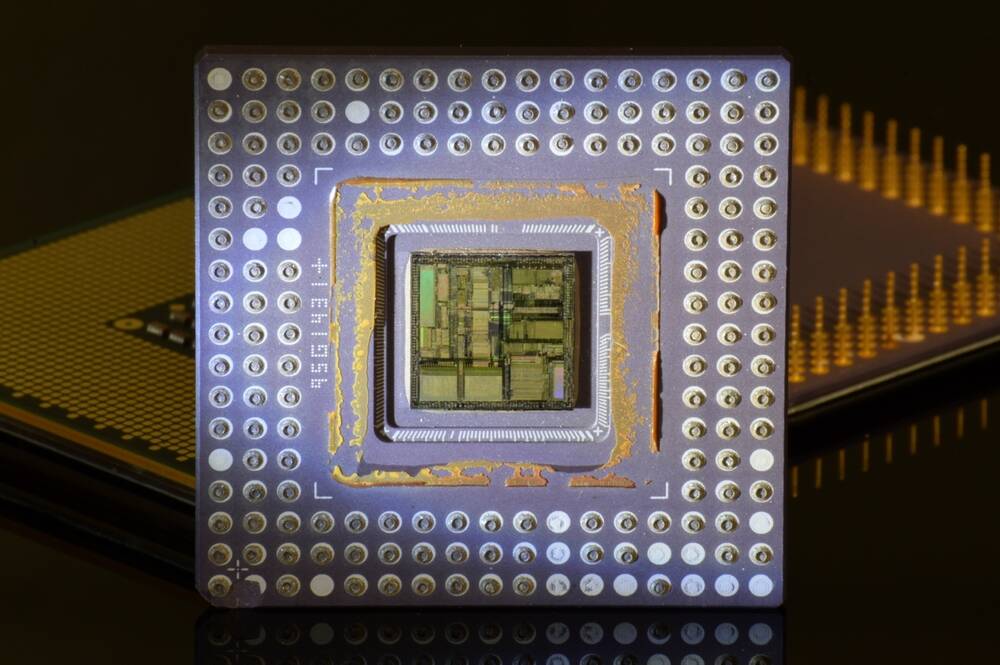STMicroelectronics Slims To Be Lean, Mean, Chipmaking Machine

Euro chipmaker STMicroelectronics is reorganizing into two product groups, down from three, saying it wants to boost efficiency and get closer to customers in a decision that will also cut overhead.
The Swiss multinational said its new org chart will be effective February 5. As part of this move, the company is implementing a new application marketing organization across all ST Regions.
Post reorganization, the two product groups making up STMicroelectronics include Analog, Power & Discrete, MEMS and Sensors (APMS), led by Marco Cassis, ST President and member of the Executive Committee; and Microcontrollers, Digital ICs and RF products (MDRF), led by Remi El-Ouazzane, who hold the same title.
The APMS group will include all of ST's analog products - power solutions for automotive, silicon carbide products and MEMS (micro-electromechanical systems) and sensors. It will have two reportable segments: Analog products, MEMS and Sensors (AM&S), and Power and discrete products (P&D).
The MDRF group will envelope digital chips and microcontrollers, including those for automotive applications, RF, and Infotainment chips. It will likewise comprise two reportable segments: Microcontrollers (MCU) and Digital ICs and RF Products (D&RF).
STMicroelectronics said that as a result of the shakeup, Marco Monti, president of the former Automotive and Discrete Product Group, is leaving the company. We asked the chipmaker if the reorganization would lead to any other employee layoffs, and will update if we get an answer.
President and CEO Jean-Marc Chery claimed the move would accelerate time-to-market for STMicroelectronics and speed its product development innovation and efficiency.
"This is an important step in the development of our established strategy, in line with our value proposition to all stakeholders and with the business and financial ambitions we set back in 2022," Chery said in a statement.
- Qualcomm CEO's pay jumps 395% in slow year for phone chips
- First functional graphene semiconductor could power future chips
- Teardown finds Huawei's 5nm notebook processor was made in Taiwan, not China
- Microchip nabs $162M to keep chips for washing machines – and missiles – flowing
"In addition, we are getting even closer to our customers with an application marketing organization by end market which will boost our ability to complement our product offerings with complete system solutions."
This new application marketing organization will cover four markets: Automotive; Industrial Power and Energy; Industrial Automation, IoT and AI; and Personal Electronics, Communication Equipment and Computer Peripherals.
STMicroelectronics was one semiconductor outfit that appeared to be bucking the industry trend last year, beating analyst expectations and delivering revenue toward the upper end of guidance, helped by strong demand in its Automotive and Industrial segments.
The company also revealed it was to receive billions of euros in funding from the European Commission to build a chip manufacturing plant in France as part of a joint project with GlobalFoundries.
There are also hints that the broader semiconductor industry may have turned the corner and could be heading back into growth following a period of falling demand for chips.
The Semiconductor Industry Association (SIA) in the US reported that global sales hit a total of $48 billion during November 2023, an increase of 5.3 percent over the same period a year earlier.
SIA president and CEO John Neuffer said it was an indication that the chip market is gaining strength as we enter the new year, and forecast double digit growth in the global semiconductor market for 2024.
The latest unaudited figures from Taiwanese chipmaker TSMC, one of the largest semiconductor manufacturers in the world, shows better revenue for Q4 2023 than the market expected. The company is to officially announce its earnings later this month. ®
From Chip War To Cloud War: The Next Frontier In Global Tech Competition
The global chip war, characterized by intense competition among nations and corporations for supremacy in semiconductor ... Read more
The High Stakes Of Tech Regulation: Security Risks And Market Dynamics
The influence of tech giants in the global economy continues to grow, raising crucial questions about how to balance sec... Read more
The Tyranny Of Instagram Interiors: Why It's Time To Break Free From Algorithm-Driven Aesthetics
Instagram has become a dominant force in shaping interior design trends, offering a seemingly endless stream of inspirat... Read more
The Data Crunch In AI: Strategies For Sustainability
Exploring solutions to the imminent exhaustion of internet data for AI training.As the artificial intelligence (AI) indu... Read more
Google Abandons Four-Year Effort To Remove Cookies From Chrome Browser
After four years of dedicated effort, Google has decided to abandon its plan to remove third-party cookies from its Chro... Read more
LinkedIn Embraces AI And Gamification To Drive User Engagement And Revenue
In an effort to tackle slowing revenue growth and enhance user engagement, LinkedIn is turning to artificial intelligenc... Read more

